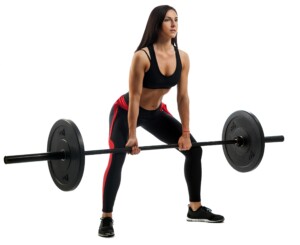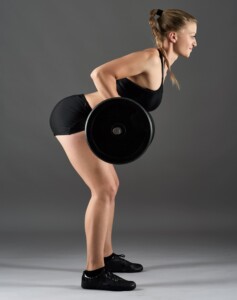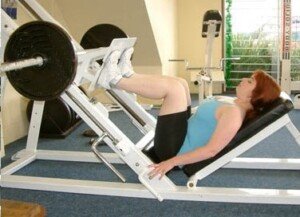
Are you an older woman who fears fracturing a bone while walking your high energy dog?
If your dog is big and likes to pull, or is prone to suddenly charging towards another dog or squirrel, this will yank on your body in a way that can make you wonder about the possibility of suffering a broken bone.
This fear differs from one older woman to the next, in that while one worries about only a hairline fracture in the wrist or shoulder, another may wonder about the possibility of being knocked to the ground as the dog bolts off.
The idea of hitting the ground hard can bring to mind a hip fracture or broken ankle bone.
There are two ways to look at this conundrum.
First Solution
The first is to train your dog to walk at your pace rather than continuously pull forward, but this isn’t as easy as it sounds.
An instant fix to this might be a “gentle leader” leash, which goes on a dog’s snout.
The design makes it uncomfortable for a dog to pull forward against the walker’s resistance and may prevent the dog from pulling hard. But there are no guarantees.
Second Solution
The second option is to make your bones more dense. All older (and younger) women should strength train.

Freepik.com, pressfoto
The problem is that most women, particularly older ones, do not strength train.
And most mature woman who DO strength train use very light dumbbells or light settings on equipment.
Light weight workouts won’t cut it for making bones durable.
How does lifting weights strengthen bones?
Moving weight loads forces the muscles to pull against the bones.
This stresses the bones, but the “stress” here is a good kind of stress.
This pulling stress makes the bones become denser and stronger, lowering their risk of a fracture from being pulled hard by a big strong dog or from taking a fall to the sidewalk.
Change the Way You Think About Strength Training
Though older women who’ve never lifted weights will need to start out with light resistance, the goal is to always aim for progression in weight load over time.
You should not STILL be lifting the same amount of weight months after you started your program.
As for mature women who’ve already been strength training – but sticking to light resistance – it’s high time to up the ante if you want to prevent bone fractures.
There’s a very simple formula to follow to know that you’re lifting in the “progressive resistance” zone.
• The resistance – be it dumbbells, a barbell, a kettlebell, a weight plate machine, a weight stack machine or a pulley/cable machine – should be light enough to perform eight repetitions with good form, but too heavy to perform more than 12 repetitions.
• If you can perform more than 12 reps, it’s time to increase the load.
• If you can’t do more than seven reps, lighten the load a little.
• This “eight to 12 rep max” protocol means business: That 13th rep is absolutely NOT possible.
Great Exercises to Reduce Risk of a Bone Fracture
Seated Row
This can be done on a pulley machine or other equipment. A mistake I often see is women bending their wrists inward as they pull the handles towards their chest.
Keep wrists aligned with forearms. Another mistake is leaning back as they pull the handles in.
When you’re walking your dog and it pulls, you don’t have the option of leaning back to counteract this.
When you do a seated row, you’ll need to simulate the upper body position you’d have while walking your dog: Do not lean back.
By keeping your back upright, you better isolate the muscles you want to target.
Deadlift

Pick the barbell off the floor and straighten all the way up. Shutterstock/Everyonephoto Studio
The deadlift works nearly the entire body. While walking your dog, your entire body including the core – not just the upper part – is against resistance when the dog pulls on the leash.
Excellent form is important, including never letting your shoulders drop below your hips once you begin the lift. You’ll want to get the form down with very light weight first before moving to the eight to 12 rep max protocol.
Bent-over Barbell Row

Shutterstock/Catalin Petolea
This may feel awkward at first, but, like the deadlift, it’s a whole-body movement.
Keep your legs slightly bent throughout, and never allow your low back to become rounded.
The start position is to position yourself like the model in the picture above, and raise the barbell to your torso, hold there for a second, then with control release it so that your arms are straight but not locked out.
Then bring it back up again for the next rep. Keep your body in position the entire time and do not jerk the weight up.
If you must jerk it to get it to your torso, it’s too heavy.
Squat
Strong legs will help you better control a strong dog.
Squats can be done with a barbell across your back, holding dumbbells at your sides or shoulders, or holding a kettlebell or weight plate at your chest.
Any of these varieties will help you reach your goals; it comes down to personal preference.

Move up in weight load gradually. Freepik.com
Leg Press
When doing the leg press, legs should bend at least 90 degrees. Keep feet flat on the sled at all times. Also do not lock out the knees when straightening them; keep a soft bend.

George Stepanek, CreativeCommons
Dumbbell Curl
Since you hold the leash with one hand, it only makes sense to work the biceps with a dumbbell than with a barbell or cable bar.
Do these while standing rather than seated, since you don’t walk your dog while seated.
Dumbbell Walk
Hold dumbbells as shown below, and walk around for 20-30 seconds, maintaining this position. Keep upper arms to your sides. Keep your back STRAIGHT.

Depositphotos.com
Beginners will feel their lower back and biceps working with only five pound weights. This routine of 20 to 30 seconds should be challenging. As it gets easier, use heavier dumbbells.
Your bones won’t become denser overnight, but after 30 days they will definitely be stronger if you do these exercises twice a week, three sets each.
It’s crucial that you continuously strive to increase the weight load over time, to keep improving bone density and reducing the risk of a fracture.
You’ll find that walking your pull-happy dog will become less difficult, and your anxiety over breaking a bone will diminish.
 Lorra Garrick is a former personal trainer certified by the American Council on Exercise. At Bally Total Fitness she trained clients of all ages for fat loss, muscle building, fitness and improved health. She also used to have a White German Shepherd.
Lorra Garrick is a former personal trainer certified by the American Council on Exercise. At Bally Total Fitness she trained clients of all ages for fat loss, muscle building, fitness and improved health. She also used to have a White German Shepherd.
.








































